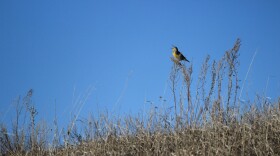It is time to be on the lookout for falling stars, or should I say meteors for the next few weeks. That is because the Lyrid Meteor Shower, annually runs from April 16-25. The peak viewing period will come on the evening of April 22 and early morning of the 23, with perhaps 20 or so meteors per hour. The moon is going to interfere with some of the more faint meteors during the peak viewing period, but if the sky is clear, it will be worth taking a look.
Like the other meteor showers, the Lyrid meteor shower is named because the meteors appear to originate out of the constellation Lyra (The Lyre). But the meteor may be observed most anywhere overhead.
The Lyrids have the reputation for providing long trails which may last for several seconds. They are also known for their occasional outbursts which may produce over 100 meteors an hour. The reason for these outbursts is unknown, but with a potentially impressive show like that, it is well worth checking out occasionally.
The Lyrids are caused by material from Comet Thatcher. You may recall that comets are mixtures of ice, rock, and dust. They are often described as dirty snowballs a few miles in diameter. When they pass near the sun, the heat causes them to shed ice and particles. The particles, mostly sand-sized pieces of ice and rock, create a “debris field” in outer space. When the earth passes through these debris fields, the pieces collide with the atmosphere and become glowing hot. From the earth they are seen as “falling stars” or more accurately meteors.
In addition to the Lyrids, the Eta Aquarids Meteor Shower will overlap with the Lyrids. The Eta Aquarids Meteor Shower will begin on April 19 and run through May 28. The peak viewing period for the Eta Aquarids will be the night of May 6 and early morning of May 7 with perhaps 30 meteors per hour. A waxing crescent moon could make for some excellent viewing.
The Eta Aquarids are caused by particles shed from the well-known Halley’s Comet. Halley’s Comet has a 75-76 year orbit. It made its last pass by earth in 1986. The next opportunity to view the comet will come in 2061.
So from now until May 28, make a point to look up at the sky occasionally. The meteor showers could make for some fun and interesting shows!




